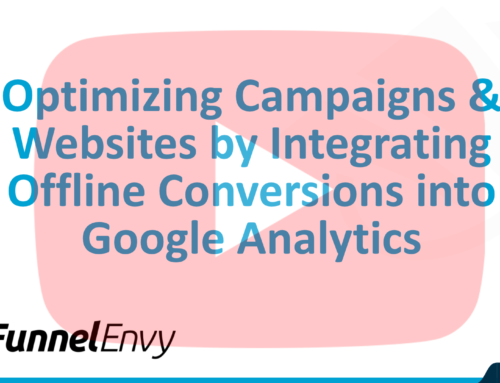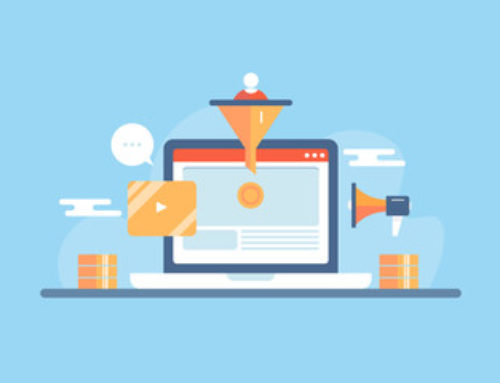Digital marketing is exponentially more powerful today than the techniques used in the early days of the web. Unfortunately, with its expanded capabilities comes more complexity. There are more tools, techniques, and channels available than ever before and that can make it difficult to choose which software to use in the pursuit of your digital marketing goals.
This article outlines a basic framework for addressing this common B2B marketing issue. While we can’t recommend specific software tools universal for all businesses, the principles outlined here should get you well on your way to selecting your own set of software tools – commonly known as a “tech stack.”
Our Approach to B2B Marketing Tech Stacks
We suggest clients and prospects select two different software tools to be the foundation of their marketing: one customer relationship management (CRM) tool, and one marketing automation tool. A CRM acts as a database of information on your past, present, and future customers as well as a communication log. A marketing automation tool allows you to automate specific marketing tasks across different channels, particularly email and social media.
Why these two specific tools? Here’s the breakdown:
Core Element 1 of 2: CRM
The most basic version of a CRM is a digital business address book that also allows you to take notes. But in the last decade or so, CRM technology has come a long way. Today the decision about CRM is less about having one, and more about choosing the best one to integrate properly with the rest of your tech stack.
Today the decision about CRM is less about having one, and more about choosing the best one to integrate properly with the rest of your tech stack. Click To TweetAnother reason we like CRMs is their importance for sales and marketing. The CRM tool acts as a “home base” for many sales reps. It’s one of the first things they check when their work begins (along with their email) and houses critical data that helps them be successful. In an optimal CRM situation, not only is this data used to help your sales team, but it can also be fed to the marketing department so they can use it to flesh out changes to buyer personas, campaign strategy, etc.
Consider our next core element regarding marketing data: a marketing automation platform.
Core Element 2 of 2: Automation Platform
While your CRM will probably be the home base for the sales team (or whoever is handling sales responsibilities at your company), your marketing automation platform will be the primary tool used by marketing.
At its most fundamental level, a marketing automation platform does exactly what it sounds like: automates your marketing. Typically, it handles tasks that would be impossible or highly arduous for a person to complete manually, including things like:
- Sending out emails to an entire subscriber list or segment of a list
- Indicating which campaign made a prospect aware of the company
- Scoring leads to determine which ones are most likely to become customers
- Gathering user data from email and website interactions to determine which elements of your marketing are most successful
- Connecting all the other elements of your marketing (including a CRM) into one consistent resource your team can use
A few of the most common marketing automation tools include:
- HubSpot, popular for small and medium-sized businesses and known for simple, intuitive user interfaces
- Marketo, an automation software platform owned by Adobe that focuses on tracking user experiences and improving cross-channel engagement
- Constant Contact, which focuses on engaging with small business clients who are interested in using email and SMS marketing
There are many different options depending on your budget and the kind of functionality you want. On which specific factors should you aim your focus? Here are a few tips to consider as you compare different marketing automations and CRM tools available for your company:
- Your current workflow. The way you currently do things might favor selecting one particular automation tool or another. For example, if you’re already a Salesforce user, you’re probably much more likely to use Pardot instead of a similar tool. It’ll provide the least disruption to your current workflow, which saves money in the long run, even if it means selecting the more expensive option in the short term.
- Budget. How much can you afford to spend on a new automation tool? Think about areas where you might be able to save money. HubSpot, for example, offers many different pricing options and bundles across its suite of products and services. By tailoring your purchase in this way, you can save money by eliminating services and features you don’t need.
- Installation and setup. Essentially – how long does it take to go from purchase to being able to use the platform fully? While you might view this as a temporary concern, it’s still important. What if your sales and marketing teams cannot function at full capacity for weeks or even months while you are integrating new software into the company’s workflow? Decision-makers must determine if this kind of sacrifice is worth making for an automation or CRM platform.
- Service and support. Once things are in place and your company can begin using the software, what happens if there is an issue or something stops working? This factor may not be obvious upfront, but it could be worth investing a little more in a higher-end option that provides better support to users.
Finally, remember that most of the major marketing automation platforms available will have their own CRM tool built-in. While it is possible to use separate tools for CRM and marketing automation, make sure they integrate well or it could create more work than necessary.
A Word on Google Analytics
No matter what kind of marketing automation platform or CRM you use, we also recommend incorporating Google Analytics into your stack. It’s one of the most popular and universally compatible tools around, especially for marketers who rely heavily on website-based interactions to generate leads. Most of the major automation platforms will easily be able to understand and integrate data from Google, which provides another valuable source for insights without complicating your current workflow.
Bringing It All Together
Marketing technology can feel complex, but it doesn’t need to be. The best way to cut through all of the noise and complexity in marketing automation and technology is to focus on your specific needs. Before you compare the various options available to meet your CRM and automation needs, a strong understanding of your target audience and how your business intends to market to them will make the search much easier.
Above all, keep things as simple as possible and as close to your current workflow as possible. Make sure to “close the loop” so that all of the different tools and platforms you use for marketing can work together to form a single, reliable set of data that will inform your strategy for attracting more leads and converting more of them to customers.
Want personalized help trying to figure out which of the many marketing software tools is best for your business? Take this quiz to see how FunnelEnvy can help ensure you’re choosing the digital marketing platforms that empower and improve your business.






